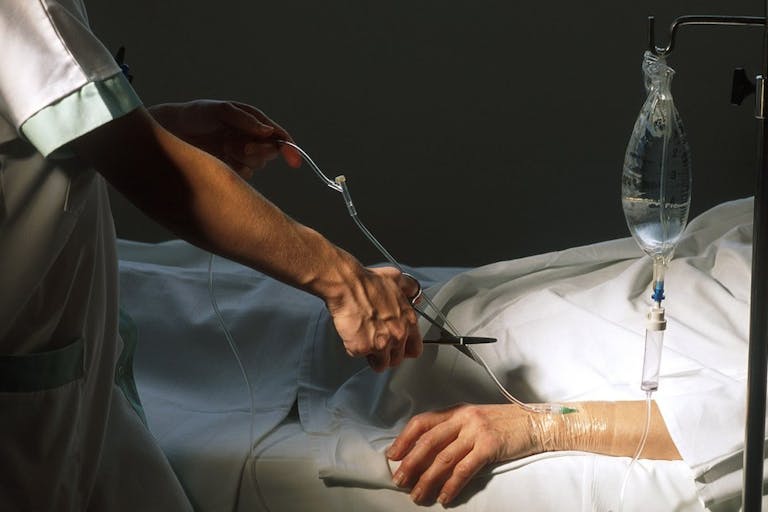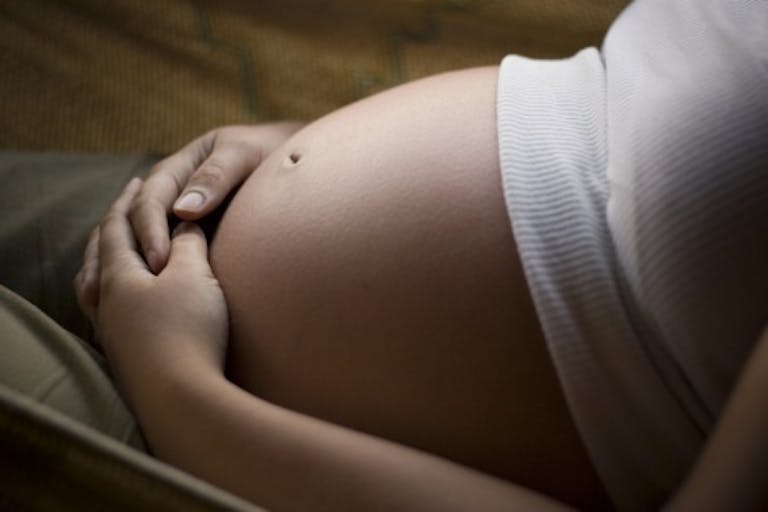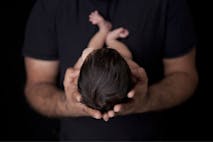
After legalizing assisted suicide, this Australian state saw spike in all suicides
Nancy Flanders
·
Pro-life support for abortion waiting periods and informed consent saves lives
It has been established in medical literature that women who have abortions are more likely to commit suicide than women who don’t. One study shows that up to 60% of aborting women have suicidal thoughts and that 28% actually attempt suicide (1). Another study showed that the suicide rate of women who had abortions was 6 to 7 times higher than the suicide rate for women who did not (2). In the case of teenagers, the statistics are even more dire – a teenage girl who had an abortion within the last six months is ten times more likely to commit suicide than a girl who didn’t have one (3).
Pro-choice groups continue to deny these facts. They argue that women feel mostly relief after an abortion and imply that women who have emotional struggles were mentally unstable before their abortions. This alienates women who suffer and may make them even more likely to feel abandoned and suicidal.
The pro-life movement has advanced legislation requiring women to receive counseling before an abortion and have a 24-hour waiting period for an abortion. These “informed consent” laws mandate that a woman be given information about alternatives to abortion, including programs that can help her if she chooses to have her child, to be informed about collecting child support from the father if she needs it, learn about their medical risks of abortion, and receive information about the unborn baby. Often, she is not required to view this information, but rather needs only to be offered the opportunity to do so at the clinic. A number of states have proposed these measures, and Planned Parenthood and other pro-choice groups have fought against them, sometimes successfully, every time.
According to one pro-abortion politician, “I just think it is patronizing and unfair to women and women’s health” (4).
According to the abortion resource handbook, a pro-choice reference guide which is geared towards women considering abortions (5):
In fact, the laws [mandating waiting period] cause many women unnecessary stress and delays, and information in state-mandated lectures and booklets is often biased, inaccurate, and intended to make women feel scared or guilty about having an abortion. … Women who go to pro-choice clinics are already receiving medical informed consent counseling before their abortions.
In reality, the “counseling” at abortion clinics is often either nonexistent or outright deceptive. Catherine Anthony Adair, former Planned Parenthood worker, says this about the counseling in her clinic (6):
In fact, clinic workers would purposefully avoid providing information on fetal development, what the child looked like, the child’s anatomical development and the pain he or she could feel. I was continuously reminded that when referring to the baby, the appropriate terminology was “clump of cells” or “contents of the uterus.”
Planned Parenthood’s mission is to pressure as many women into having an abortion as it can. Those in charge know that that can’t be accomplished if they refer to the child as a “baby.”
Then women would know what is really growing inside them: a little person with a beating heart, functioning nervous system, tiny hands and feet. The child is entirely disregarded. There is no counseling, no care, no waiting and no discussion. Once a pregnancy is confirmed, it is off to termination.
Women are denied the facts about fetal development and alternatives to abortion which would allow them to make an informed choice. They are also rushed through the counseling so that they cannot consider their options carefully. Many abortion clinic websites and publications encourage a woman to make a decision as quickly as she can – and that’s not surprising: studies have shown that the longer a woman waits to make her decision, the more likely she is to have her baby and the less likely she is to abort.
According to one anonymous clinic worker (7):
When a girl called to make her appointment, we’d work her in as soon as possible. If she called on Tuesday, we’d have her in no later than Friday. We wanted to avoid a long waiting period where she’d have time to think about it.
A waiting period after informed consent allows a woman to carefully consider her options in light of the information she has received. In 2006, a study published in Matrix: Journal of Law-Medicine has confirmed that waiting periods before abortion actually reduce the suicide rate among women ages 25-64.
The study found that the suicide rate drops 10% among these women when waiting period and informed consent legislation goes into effect. When adjusted for other factors, the numbers are even more dramatic – there was a 30% reduction in suicide due to these waiting periods. This means that almost one third fewer women commit suicide when such laws are in place. These laws are truly life-saving – not only do they save the lives of unborn children, but they save the lives of their mothers as well. According to the authors of the study (8):
It would appear as though waiting periods (and the counseling that usually accompanies them) induce a more reasoned approach to the abortion decision, avoiding rash decisions on the part of the pregnant women. Better decision-making processes presumably lead to fewer regrets later on, lowering the incidence of depression and, ultimately, suicide. These results suggest mandatory waiting periods represent public policies that generate large welfare gains for women faced with unwanted pregnancies.
Pro-lifers care about both unborn children and their mothers. While pro-choice activists claim that informed consent laws and waiting periods are burdensome to women and only delay the abortion process, such laws really are actually, literally, life-saving. Pro-abortion activists do not serve women by encouraging them to rush through their abortion decisions and denying them key information about abortion and its aftereffects.
D. Reardon, Aborted Women, Silent No More (Springfield, IL: Acorn Books, 2002).
Gissler, Hemminki & Lonnqvist, “Suicides after pregnancy in Finland, 1987-94: register linkage study,” British Journal of Medicine 313:1431-4, 1996; and M. Gissler, “Injury deaths, suicides and homicides associated with pregnancy, Finland 1987-2000,” European J. Public Health 15(5):459 63,2005.)
B. Garfinkel, et al., “Stress, Depression and Suicide: A Study of Adolescents in Minnesota,” Responding to High Risk Youth (University of Minnesota: Minnesota Extension Service, 1986); M. Gissler, et. al., “Suicides After Pregnancy in Finland: 1987-94: register linkage study,” British Medical Journal, 313: 1431-1434, 1996; and N. Campbell, et. al., “Abortion in Adolescence,” Adolescence, 23:813-823, 1988. See the “Teen Abortion Risks” Fact Sheet at www.unfairchoice.info/resources.htm for more information
Stephen Dinan “24-Hour Abortion Wait Progresses in House” February 3, 2001 The Washington Times, 8
K Kaufmann. The Abortion Resource Handbook (New York: Simon & Schuster, 1997) 20-21
Catherine Anthony Adair “Planned Parenthood lies about itself” Washington Examiner, 11/22/11. Quoted in Abortion Industry’s “Mission Is To Pressure Women”, Afterabortion.org, Elliot Institute, January 12, 2012.
“Abortion Clinics: An Inside Look” Last Days Ministries http://clinicquotes.com/abortion-clinic-workers-were-not-allowed-to-talk-about-alternatives/
Health Matrix: Journal of Law-Medicine, volume 16, P 183, 2006 FSU College of Law, Law and Economics Paper number 05 –27
Live Action News is pro-life news and commentary from a pro-life perspective.
Contact editor@liveaction.org for questions, corrections, or if you are seeking permission to reprint any Live Action News content.
Guest Articles: To submit a guest article to Live Action News, email editor@liveaction.org with an attached Word document of 800-1000 words. Please also attach any photos relevant to your submission if applicable. If your submission is accepted for publication, you will be notified within three weeks. Guest articles are not compensated (see our Open License Agreement). Thank you for your interest in Live Action News!

Nancy Flanders
·
Analysis
Cassy Cooke
·
Analysis
Nancy Flanders
·
Newsbreak
Angeline Tan
·
Human Interest
Nancy Flanders
·
Issues
Nancy Flanders
·
Guest Column
Sarah Terzo
·
Abortion Pill
Sarah Terzo
·
Guest Column
Sarah Terzo
·
Guest Column
Sarah Terzo
·
Guest Column
Sarah Terzo
·